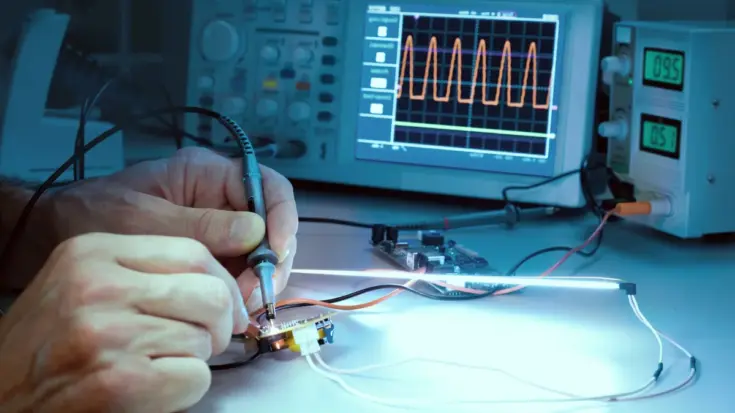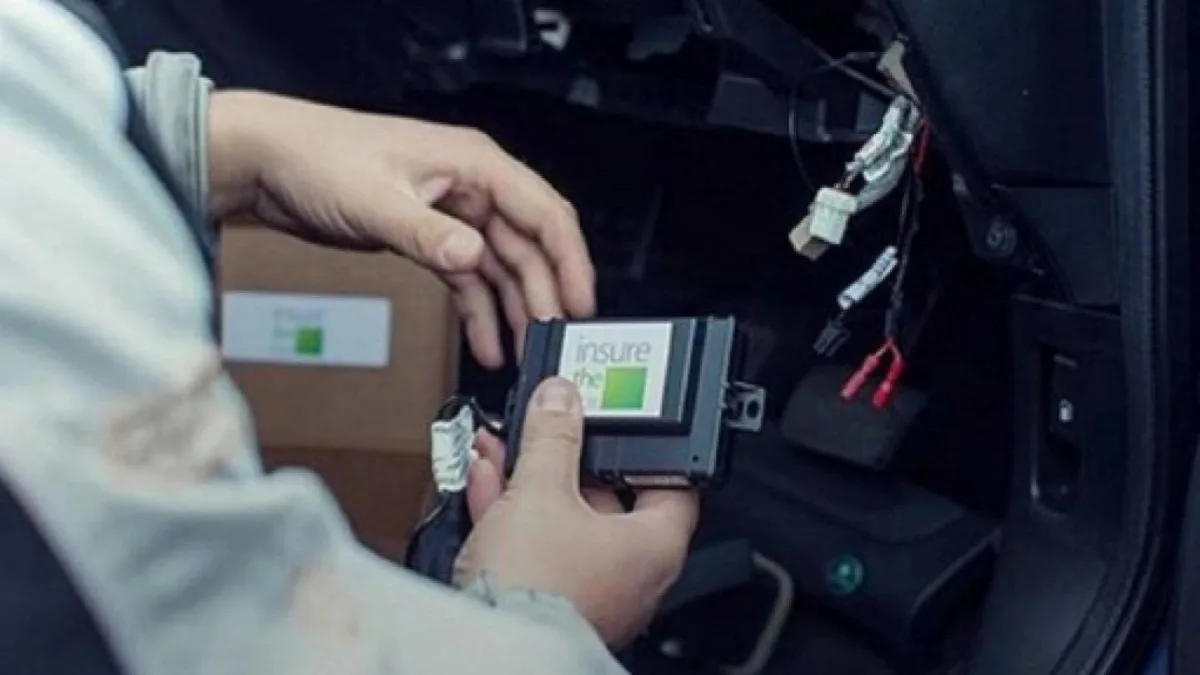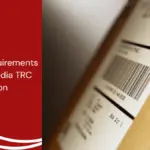A telematics box is a is an electronic device installed in a vehicle to monitor location, collect data on vehicle performance, and driver behavior. Data on driving speed, braking, acceleration, location, and mileage will be collected by this device for automatic analysis.
The Indonesian government through Director General Regulation (PERDIRJEN) No. 5 Tahun 2019 from the Ministry of Communication and Digital (KOMDIGI) has established passive optical network testing standards for telematics box to ensure that these devices are safe, efficient, and do not interfere with each other.
This regulation is intended to ensure that all telematics box distribute in Indonesia must ensure their quality, safety, and compliance with applicable regulations through testing standards.
Also Read
Table of Contents
Telematics Box Testing Standard

Before being used or marketed in Indonesia, telematics box must meet several established technical requirements. Here are some of the standards that must be met:
Power Supply
The telematics box can be supplied with either AC or DC power. For devices with an AC power supply, the device must operate normally with 10% 220V and 2% 50 Hz frequency.
When using an external power supply (eg using batteries or an AC/DC power converter), the external power supply must not affect the ability of the telecommunications tool and/or equipment to meet all technical parameter benchmarks.
Non-Pengion Radiation Requirements
The use of BS must comply with the ICNIRP guidelines for limiting exposure to time-varying electric, magnetic, and electromagnetic fields (up to 300 GHz) as specified in the table:
| Radio Frequency Range | E-field Strength (Vm-1) | H-field Strength (A m-1) | B-field (μT) | Equivalent plane wave power density Seq (W m-2) |
| 400-2000 MHz | 1.375 f1/2 | 0.0037f1/2 | 0.004f1/2 | f/200 |
| 2-300 GHz | 61 | 0.16 | 0.20 | 10 |
Electromagnetic Compatibility (EMC) Requirements
Telematics box must comply with SNI ISO/IEC CISPR 32 – 2018 and ETSI EN 301 489-1 for Electromagnetic Interference (EMI). Moreover, for Electromagnetic Susceptibility (EMS) must comply with ISO/IEC CISPR 35.
Electrical Safety Requirements
The electrical safety assessment of telematics box must meet the requirements specified in SNI IEC 60950-1 or SNI IEC 62368-1. The parameters that must be met are:
- a. overvoltage
- b. leakage current.
Parameter testing is carried out based on the following assumptions:
- a. BS powered by a special external power supply (charger/power adapter); and
- b. BS operating with SELV in an environment where excessive voltage from the telecommunications network is possible. SELV refers to voltage that does not exceed 42.4 V peak or 60 V DC.
Technical requirements

GSM
| Parameters | GSM | |
| 900 MHz | 1800 MHz | |
| Transmitter | 800 – 915 MHz | 1710 – 1785 MHz |
| Receiver | 925 – 960 MHz | 1805 – 1880 MHz |
| Channel spacing | 200 kHz | 200 kHz |
| Number of channels (n) | 0 < n < 124 dan 975 < n < 1023 | 525 < n < 885 |
| Frequency stability | ≤ 0.05 ppm | ≤ 0.05 ppm |
| Spurious emissions | < 600 kHz: -36 dBm ≥ 600 kHz & < 1800 kHz = -56 dBm ≥ 1800 kHz = -51 dBm | Just like GSM 900 MHz |
| Power class | Class 1: 8 Watt = (39 ± 2) dBm Class 2: 5 Watt = (37 ± 2) dBm Class 3: 2 Watt = (33 ± 2) dBm Class 4: 0.8 Watt = (29 ± 2) dBm | Class 1: 1 Watt = (30 ± 2) dBm Class 2: 0.25 Watt = (24 ± 2) dBm Class 3: 2 Watt = (33 ± 2) dBm |
| RF sensitivity | -102 dBm | -102 dBm |
| Bit error rate | Maximum 2% (for 100,000 bits) | Maximum 2% (untuk 100.000 bit) |
WCDMA
| Parameters | WCDMA | |
| Band I | Band VIII | |
| Frequency band | 1920 – 1980 MHz | 880 – 915 MHz |
| Receiver (downlink) | 2110 – 2170 MHz | 925 – 960 MHz |
| Channel numbering (UARFCN) | Uplink: 9612 – 9888 Downlink: 10562 – 10838 UARFCN is calculated from the carrier frequency according to the standard formula (FUL and FDL offset) | |
| Maximum power (multicode DPCH) | Band I: Class 1: 33 dBm (±1/–3 dB) Class 2: 27 dBm Class 3: 24 dBm Class 4: 21 dBm | – |
| Error frequency | ± 0.01 ppm Measured by comparing the SS frequency to the BS frequency in a 3904-chip interval (< 25 µs) | |
| Used bandwidth (OBW) | OBW < 5 MHz Diukur pada 99% daya total WCDMA, lebar pita nominal 5 MHz | |
| Adjacent channel leakage ratio (ACLR) | Class 3 & 4: ±5 MHz → limit 33 dBm ±10 MHz → limit 43 dBm | |
| Spurious emissions | 9 kHz ≤ f < 150 kHz: –36 dBm (BW 1 kHz) 150 kHz ≤ f < 30 MHz: –36 dBm (BW 10 kHz) 30 MHz ≤ f < 1 GHz: –36 dBm (BW 100 kHz) 1 GHz ≤ f < 12.75 GHz: –30 dBm (BW 1 MHz) | |
| Sensitivity (receiver) | Band I: DPCH_Ec < –117 dBm/3.84 MHz BER ≤ 0.001% | – |
LTE
| Parameters | Value/Description |
| Frequency band | Uplink (SS → BS): 450 – 457,5 MHz Downlink (SS ← BS): 460 – 467,5 MHz |
| Channel bandwidth | 1,4 MHz, 3,0 MHz, 5,0 MHz |
| Maximum output power | 23 dBm ± 2 dB |
| Minimum output power | Must not exceed –40 dBm |
| Error frequency | ± 0.1 ppm (in 0.5 ms / one time slot) |
| Error Vector Magnitude (EVM) | QPSK/BPSK: Max 17,5% 16QAM: Max 12,5% |
| Used Bandwidth (OBW) | OBW must < channel bandwidth (99% total transmit power) |
| Spectrum Emission Mask | Emission Limits(dBm): ±0–1 MHz: –10 / –13 / –15 ±1–2.5 MHz: –10 ±2.5–2.8 MHz: –25 ±2.8–5 MHz: –10 ±5–6 MHz: –25 ±6–10 MHz: –25 |
| Measurement bandwidth | 30 kHz (for ±0–1 MHz), the rest 1 MHz |
| Adjacent Channel Leakage Ratio (ACLR) | E-UTRA ACLR ≥ 30 dB for BW 1,4 / 3 / 5 MHz Offset channel: ±1.4 / ±3 / ±5 MHz |
| Spurious emissions | Limit of AfooB: 1,4 MHz: 2,8 MHz 3 MHz: 6 MHz 5 MHz: 10 MHz |
| Throughput requirements | ≥ 95% of maximum reference throughput |
Telematics Box Type Approval and Certification Process in Indonesia

For telematics box to be used legally in Indonesia, certification from DJID is required. Here are the steps to get it:
Pre-testing the device
Before official testing, the device must be pre-tested first using measuring equipment such as a spectrum analyzer.
This helps ensure devices meet technical standards before being tested in authorized laboratories.
Testing at an official laboratory
After passing the pre-testing, the gadget will be sent to an assigned official research facility for experience testing according to the guidelines stipulated in the Decree of the Minister (KEPMEN) of the Director General of the Ministry of Communication and Digital (DJID) No. 352 Tahun 2024.
Issuance of certificates
After the device passes testing, an official certificate will be issued by DJID. This certificate is a requirement to market the device legally in Indonesia.
Tips to ensure standards compliance
- Learn the latest regulations: Make sure you understand every detail of the Decree of the Minister of the Director General of the Ministry of Communication and Digital No. 352 Tahun 2024, including technical requirements and test methods.
- Perform pre-testing: Before official testing, perform pre-testing to ensure the device meets standards. If you don’t have a measuring instrument, use the DJID certification service, which provides pre-testing services.
- Counsel a master: If this is your to begin with time looking for certification, consider utilizing the services of experienced DJID certification administrations.<UN>









